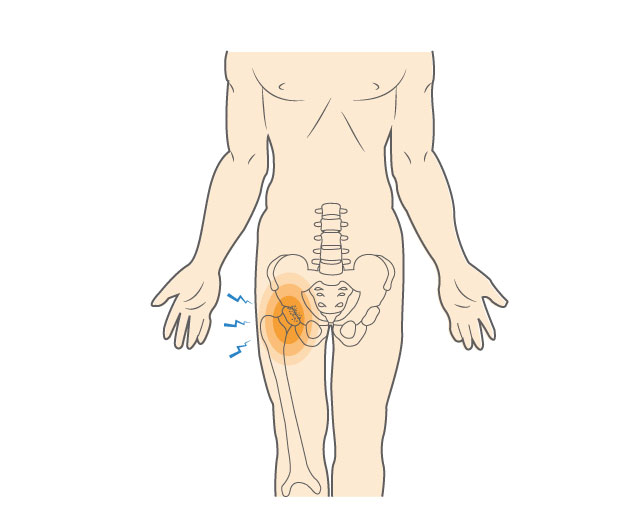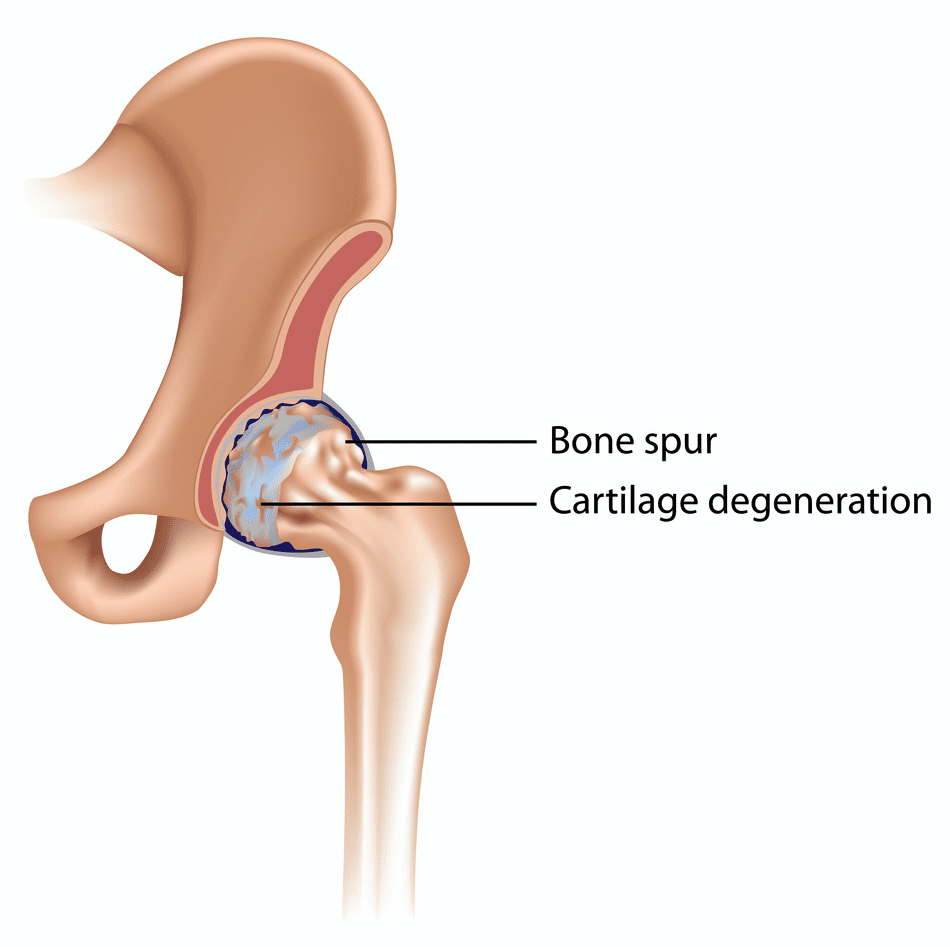The hip is often referred to as a “ball and socket” joint. The ball at the top of the thigh bone (called the femur) fits into the socket (the acetabulum) in the pelvic bone. The femoral head serves as the ball. Under normal conditions it rotates inside of the socket. Coating the ball and lining of the socket is special joint cartilage, an ultra-smooth, firm rubber-like tissue, which allows these surfaces to glide without almost any friction over one another.
Hip arthritis, also called hip osteoarthritis (OA), is a common condition affecting millions of middle-aged and older adults. Hip OA occurs when the cartilage over the joint breaks down. Ultimately with time, this breakdown can lead to exposed bone in the hip joint. This condition causes progressive pain and inflammation. For athletes, OA can limit participation in sports and performance at peak levels.



